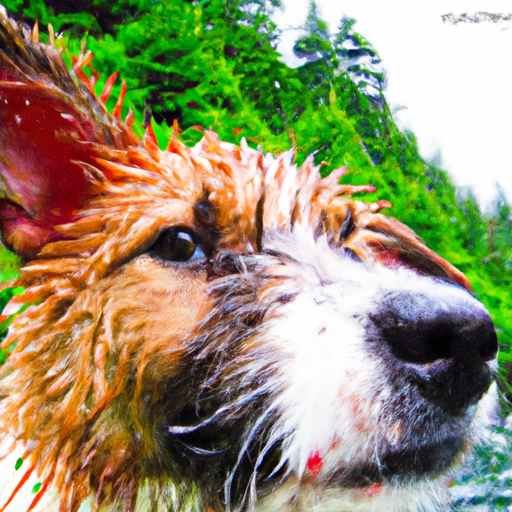Thinking about starting obedience training classes for your puppy? It's a decision that every new dog owner faces, and one that can greatly benefit both you and your furry friend. While it may seem overwhelming at first, enrolling your puppy in obedience training classes can provide numerous advantages for their well-being and development. From teaching basic commands to socializing with other dogs, these classes create a strong foundation for a well-behaved and happy canine companion. So, if you're wondering whether or not to take the plunge, read on to discover the many reasons why obedience training classes may just be the perfect option for you and your adorable pup.
Benefits of Obedience Training Classes
Improved Behavior and Manners
Obedience training classes provide a structured environment for your puppy to learn appropriate behavior and manners. Through consistent training and guidance, your puppy will develop skills such as sitting, staying, and coming when called. These basic commands will not only make daily interactions easier but also ensure your puppy's safety. As your puppy learns what is expected of them, you'll notice a significant improvement in their behavior, reducing unwanted behaviors like jumping, chewing, and excessive barking.
Establishing a Strong Bond
Participating in obedience training classes with your puppy can strengthen the bond between the two of you. By working together as a team, you are building trust and establishing clear communication. Through positive reinforcement and praise, your puppy will associate you with rewards and positive experiences, creating a strong emotional connection. This bond will continue to grow as you both progress through the training journey together, fostering a deeper understanding and mutual respect.
Building Confidence and Socialization
Attending obedience training classes allows your puppy to interact with other dogs and people in a controlled environment. This socialization opportunity helps build their confidence and teaches them appropriate behavior when meeting new people and animals. Your puppy will learn to navigate various situations, such as staying calm in a group setting or remaining focused even with distractions. This exposure will minimize the chances of fear or aggression-related issues later on in their lives.
Promoting Mental Stimulation and Focus
Obedience training classes offer mental stimulation for your puppy. Learning new commands, practicing obedience exercises, and problem-solving challenges their minds and keeps them mentally engaged. In these classes, your puppy will also learn to focus on you and respond to your cues amidst distractions, improving their overall concentration and focus. This mental stimulation is crucial for their well-being and can prevent destructive behaviors that may arise from boredom or lack of stimulation.
Finding the Right Obedience Training Classes
Researching Local Training Centers
To find the right obedience training classes for your puppy, start by researching local training centers in your area. Look for centers that specialize in positive reinforcement training methods, as these techniques have been shown to be the most effective and humane. Online directories, local pet stores, and recommendations from other dog owners can be valuable resources in finding reputable training centers.
Reading Reviews and Testimonials
Once you have a list of potential training centers, take the time to read reviews and testimonials from previous clients. Look for feedback on the quality of instruction, effectiveness of the training methods, and the overall experience. Positive reviews from satisfied clients can give you confidence in your choice, while negative reviews can help you avoid centers that may not meet your expectations.
Visiting Potential Training Centers
Before making a final decision, it's important to visit the potential training centers in person. This will give you an opportunity to observe the training environment, meet the trainers, and assess the overall atmosphere. Pay attention to the cleanliness of the facility, the condition of the training equipment, and the demeanor of the trainers. Trust your instincts and choose a center where you feel comfortable and confident in leaving your puppy for training.
Checking Credentials and Experience
When selecting an obedience training class for your puppy, it's important to check the credentials and experience of the trainers. Look for certifications or qualifications that indicate they have undergone specific training in dog behavior and training techniques. Additionally, inquire about their experience working with puppies, as their expertise in this area will ensure they understand the unique needs and challenges that come with training young dogs.
Determining the Right Timing
Age and Development Considerations
When considering obedience training classes, it's essential to take into account your puppy's age and developmental stage. Generally, puppies can start obedience training as early as 8 weeks old, as long as they have received their initial vaccinations. However, keep in mind that very young puppies have limited attention spans and may tire easily. It's important to choose a training program that takes their age and developmental needs into consideration.
Socialization Window
The socialization window, which typically occurs between 3 and 14 weeks of age, is a critical period for puppies to learn how to interact with the world around them. Obedience training classes during this time can provide invaluable socialization experiences, helping puppies become well-adjusted and confident adults. By exposing them to a variety of sights, sounds, and experiences, you can help prevent fear-based behavior problems from developing later on.
Potty Training Progress
Before enrolling your puppy in obedience training classes, ensure that they have made significant progress in their potty training. A fully potty trained puppy will be more focused during training sessions, as they won't be preoccupied with needing to relieve themselves. Additionally, a puppy that understands the importance of toileting in appropriate areas will be better equipped to learn and follow commands without frequent interruptions.
Choosing Between Group and Private Classes
Benefits of Group Classes
Group obedience training classes can offer several benefits for both you and your puppy. In a group setting, your puppy will have the opportunity to interact and socialize with other dogs, which can enhance their social skills. Group classes also allow you to learn from other owners' experiences and observe how their puppies respond to the training exercises. The collaborative environment can be motivating and encourage friendly competition among the participants.
Benefits of Private Classes
While group classes have their advantages, private obedience training classes also have their merits. Private classes provide one-on-one attention from the trainer, allowing for a more personalized training plan tailored to your puppy's specific needs and temperament. This individualized approach can be especially beneficial for puppies with behavioral issues or those who require extra attention. Private classes may also be a better option for owners who prefer more privacy or have a hectic schedule that doesn't align with group class timings.
Considering Individual Puppy Needs
When deciding between group and private classes, it's essential to consider your puppy's individual needs. Some puppies thrive in group settings and enjoy the socialization aspect, while others may find it overwhelming and struggle to focus. Assess your puppy's temperament, energy level, and comfort level with other dogs to determine which type of class would be the most suitable and beneficial for them.
Costs and Time Commitment
Comparing Prices and Packages
Before enrolling in obedience training classes, it's important to compare the prices and packages offered by different training centers. Prices can vary depending on the location, reputation of the center, and the duration of the training program. Take note of what each package includes, such as the number of classes, any additional support or materials provided, and any guarantees or refund policies. Choose a program that fits within your budget while also offering comprehensive training.
Evaluating Training Duration and Frequency
Consider the duration and frequency of the obedience training classes when making your decision. Some programs may offer shorter classes held more frequently, while others may have longer classes held less frequently. Reflect on your schedule and your puppy's energy level to determine which option would be the most manageable and effective. Keep in mind that consistency is key in obedience training, so choose a program that allows for regular practice and reinforcement of the learned commands.
Additional Expenses to Consider
In addition to the cost of the classes themselves, there may be additional expenses to consider. These can include training equipment, such as leashes, collars, and treats, as well as any recommended reading materials or training aids. Factor in these additional costs when budgeting for obedience training classes to ensure you are fully prepared.
Balancing with Other Commitments
When assessing the time commitment required for obedience training classes, consider how it fits into your other commitments and responsibilities. Ensure that you can dedicate enough time and energy to attend classes regularly, practice training exercises at home, and reinforce the learned commands throughout your daily interactions with your puppy. Obedience training is a commitment that requires dedication, patience, and consistency for successful results.
Preparing for Obedience Training Classes
Basic Preparations
Before attending obedience training classes, there are some basic preparations you can make to set you and your puppy up for success. Ensure that your puppy has had an opportunity to relieve themselves before the class to avoid distractions. Bring plenty of small, soft treats that your puppy enjoys and a treat pouch to keep them easily accessible. It's also helpful to bring a water bottle and a bowl for quick hydration breaks.
Understanding Training Methods and Techniques
Take the time to familiarize yourself with the training methods and techniques that will be used in the obedience training classes. Positive reinforcement training, which involves rewarding desired behaviors with treats or praise, is widely regarded as the most effective and humane approach. Understand the principles of timing, consistency, and clear communication to effectively train your puppy and make the most out of the classes.
Gathering Necessary Supplies
Ensure that you have all the necessary supplies for obedience training classes. Depending on the training center's requirements, this may include a properly fitting collar or harness, a sturdy leash, and appropriate training treats. It's also a good idea to bring a clicker or other training device if you plan on incorporating them into your training routine. By having these supplies organized and ready, you can maximize your training time and focus on teaching your puppy new skills.
Teaching Basic Commands
Sit
Teaching your puppy to sit is one of the fundamental commands they will learn in obedience training classes. Start with a treat in your hand and hold it close to your puppy's nose. Slowly move the treat slightly upwards and backward, encouraging your puppy to follow it with their nose. As their head goes up, their bottom will naturally lower into a sitting position. Once they are fully sitting, offer the treat and praise them. Repeat this process, gradually reducing the need for a treat in your hand until they can sit reliably without the lure.
Stay
The command “stay” teaches your puppy to remain in one position until released. Begin by having your puppy sit and then give the verbal cue “stay.” Take a small step back, maintaining eye contact with your puppy. If they stay in the seated position, return to them and reward them with a treat and praise. Gradually increase the distance and duration of the stay, using a release command like “okay” to let them know they are free to move. Consistency and patience are key to developing a reliable stay command.
Lie Down
Teaching your puppy to lie down is another valuable obedience command. Start with your puppy in a sitting position, and with a treat in your hand, lure them down toward the ground. As they begin to lower their body, guide the treat slightly forward and away from them, encouraging them to stretch out into a lying position. Once they are fully lying down, reward them with the treat and praise. With consistent practice, your puppy will learn to respond to the verbal cue “down” without the need for a treat lure.
Come
The recall command, “come,” is crucial for your puppy's safety and should be taught early on. Begin in a low-distraction environment, like your living room, with your puppy on a leash. Squat down, open your arms, and call your puppy's name followed by the command “come.” Use an excited and animated tone of voice to encourage them to come to you. When your puppy reaches you, reward them with a treat and praise. Gradually increase the distance and distractions, always rewarding them for coming when called.
Leave It
The “leave it” command teaches your puppy to leave objects or items they shouldn't have. Start by holding a treat in your closed hand, allowing your puppy to sniff and paw at it. As soon as they stop trying to access the treat, say “leave it” and offer them a different, more enticing treat from your other hand. Practice this command with different objects, gradually increasing the difficulty level. This command is particularly important for safety, as it can prevent your puppy from ingesting harmful substances they may find during walks or in your home.
Heel
Teaching your puppy to walk politely on a leash and stay close by your side is the goal of the “heel” command. Begin with your puppy on a leash and hold treats in your hand, close to your side. Start walking slowly and use a verbal cue, such as “heel” or “let's go.” Encourage your puppy to walk beside you by rewarding them with treats for staying close. If they start to pull or lag behind, stop walking and wait for them to come back to your side. Consistency and frequent practice will help your puppy understand the desired behavior.
Common Challenges and Solutions
Puppy Distractions
Puppies can easily become distracted during obedience training classes, especially in a group setting. To help your puppy stay focused, choose a training center that offers classes in a controlled and structured environment. Minimize distractions by starting in low-distraction areas and gradually increasing the difficulty level. Use high-value treats and praise to keep your puppy engaged and motivated. If your puppy does become distracted, redirect their attention back to you using a treat or an attention-getting sound.
Lack of Motivation
Some puppies may lack motivation during training sessions, particularly if they become bored or uninterested in the reward being offered. To combat this, vary the treats or rewards you use in training. Experiment with different types of treats, toys, or praise to keep your puppy engaged and excited to participate. Additionally, keep training sessions short and fun to prevent your puppy from getting tired or losing interest.
Potty Training Regression
It's common for puppies to experience potty training regression during the course of their training. This can be frustrating, but it's important not to get discouraged. Stay consistent with your potty training routine and ensure that your puppy has frequent opportunities to relieve themselves outside. During training classes, take regular bathroom breaks to minimize accidents. Reinforce good potty habits by rewarding your puppy with treats and praise whenever they eliminate in the appropriate spot.
Nipping and Biting
Puppies, especially during their teething phase, may exhibit nipping and biting behaviors. It's crucial to address this issue during obedience training classes to teach your puppy appropriate bite inhibition. When your puppy nips or bites, immediately redirect their attention to an appropriate chew toy and praise them when they engage with it. Consistently reinforce this redirection technique and discourage any rough play or biting. With time and consistent training, your puppy will learn that biting is unacceptable.
Reinforcing Training at Home
Consistency and Repetition
To reinforce the training your puppy receives in obedience classes, it's crucial to maintain consistency and repetition at home. Practice the commands and exercises regularly, ideally in short daily sessions. Use the same verbal cues and hand signals taught in class to ensure clear communication with your puppy. Reinforce good behaviors with treats, praise, and affection, and avoid inconsistent or mixed messages. The more consistently you reinforce the training, the quicker your puppy will understand and respond to the commands.
Positive Reinforcement Techniques
Positive reinforcement, which involves rewarding desired behaviors, is the most effective training technique for puppies. Use treats, praise, and play as rewards for your puppy's successes during training. Reward them promptly and enthusiastically to reinforce the behaviors you want to see more of. Remember to focus on rewarding good behavior rather than punishing or scolding any mistakes. A positive and encouraging approach will build your puppy's confidence and eagerness to learn.
Avoiding Negative Reinforcement
Negative reinforcement, such as punishment or physical force, should be avoided in obedience training. These techniques can create fear, anxiety, and aggression in puppies, damaging the trust and bond you have worked so hard to establish. Instead, focus on redirecting unwanted behaviors and rewarding desired alternatives. If you need assistance with challenging behaviors, consult with a professional dog trainer who specializes in positive reinforcement training methods.
Continuing Training Beyond the Classes
Advanced Obedience Training
Once your puppy has successfully completed basic obedience training classes, you may choose to continue their training with more advanced courses. Advanced obedience training expands on the basic commands and introduces more complex behaviors and commands, such as off-leash training and distance commands. These classes provide mental stimulation, maintain good behavior, and strengthen the bond between you and your dog. Advanced training also prepares your dog for activities such as agility, obedience competitions, or therapy work.
Specialized Workshops and Activities
Beyond obedience training, there are numerous specialized workshops and activities you can explore with your dog. These may include agility, flyball, scent work, or even dog sports like dock diving and Canine Freestyle. These activities provide mental and physical stimulation for your dog and can be a fun way to bond and continue their training journey. Research local training centers or clubs that offer these activities and consider participating in workshops or classes tailored to your interests.
Considering Professional Assistance
Sometimes, despite your best efforts, you may encounter challenges or behaviors that require professional assistance. If you're struggling with specific training issues or your puppy's behavior is causing significant difficulties, consider seeking help from a professional dog trainer or behaviorist. They can assess the situation, provide tailored guidance, and develop a training plan suited to your puppy's needs. Professional assistance can be invaluable in addressing behavioral issues and ensuring the well-being and success of your puppy.






